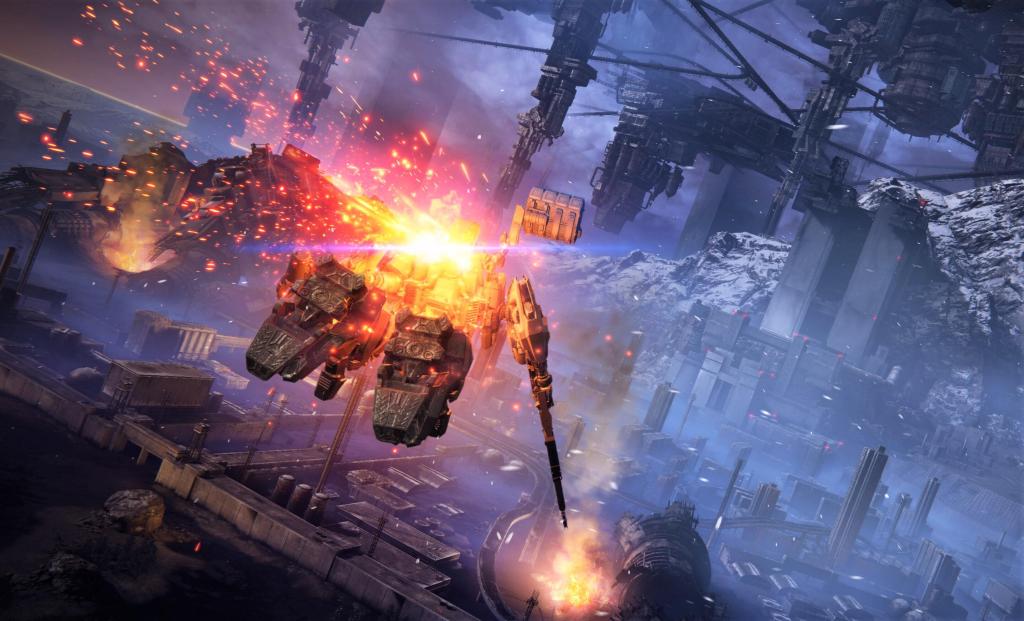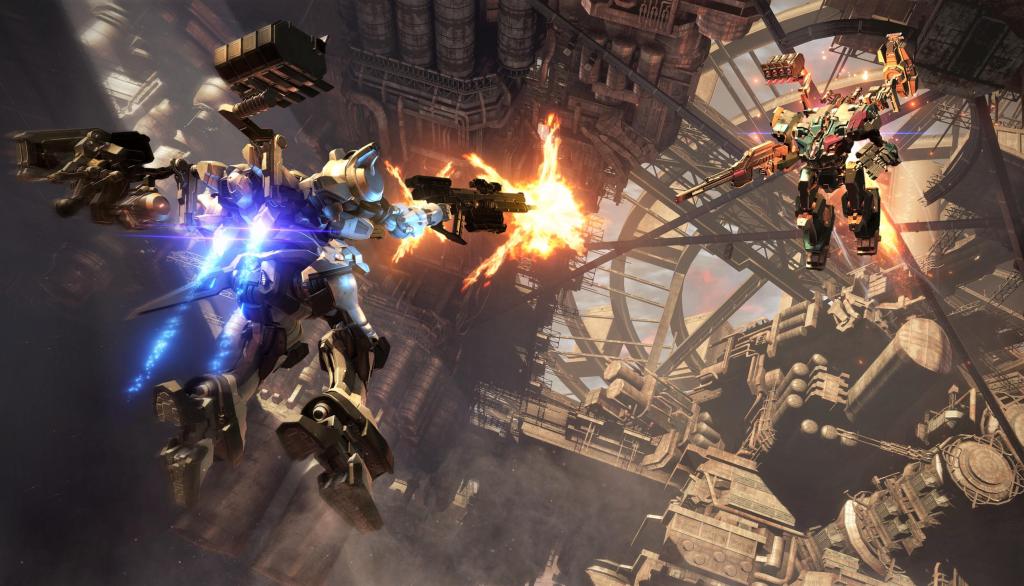Armored Core 6: Fires of Rubicon continues to highlight all of the biggest strengths of FromSoftware as a studio. In the time since Armored Core last saw a major release back in 2013, FromSoftware has become one of the most well-known developers in the world, primarily thanks to its work on games like Dark Souls, Bloodborne, Sekiro: Shadows Die Twice, and Elden Ring. With its return to Armored Core, the studio is making quite a large departure from its most recent games. Thankfully, FromSoftware hasn’t missed a beat with AC6 and has delivered one of the best action games of 2023.
Videos by ComicBook.com
In typical Armored Core fashion, most of the enjoyment of Fires of Rubicon relies entirely on its relatively straightforward gameplay loop. Players are tasked with creating their own mech, which they can choose to kit out in a variety of different ways. Everything from the limbs, body, head, and weapons that can be equipped on the bot can be swapped out, making for limitless permutations. Once settled on the design that you like, you’ll then embark on more bite-sized missions that usually only take about five to ten minutes to complete.

It’s this high level of mech customization in Armored Core 6 that is one of the game’s best components. The customization system is one that seems daunting at first, but once you begin to understand what each stat category in the game does, it starts to become incredibly satisfying to create builds that specialize in various areas. Throwing together a certain mech and then taking it into a mission to see how it performs is something that I never grew tired of in my time with AC6. And even when a certain design didn’t work out as well as I hoped, it was easy to switch things around to find something that did benefit me.
Even though I love this process of testing out various mech builds, one of the big drawbacks of Armored Core 6 I found is that certain setups seem to be far more effective than others. Fires of Rubicon encourages players to build their own mech around various parts that typically fit into a light or heavy category. If you fully index into heavy parts, you’ll create a mech that is essentially a tank. Lightweight builds, on the other hand, will turn you into a glass canon; you might be able to hit fast and hard, but taking incoming damage will lead to quick deaths. Upon reaching certain levels of Armored Core 6, though, it seemed clear to me that some specific designs didn’t work well in given situations no matter how much I tried.
For example, one boss fight at the end of Chapter 2 in Armored Core 6 proved to give me fits for quite a long time. Even though I was content with the mech I had created up until this point, this fight quickly showed me that my character wasn’t as good as I previously thought. Even after fine-tuning some elements of this mech design, I still wasn’t able to clear the boss with the weapons and general setup that I had preferred until this mission. Eventually, I used a completely different loadout which led to me easily surpassing the boss. Still, I was a bit disappointed to see that this battle seemed to heavily encourage one playstyle over the others that AC6 offers.

It also perhaps goes without saying, but Armored Core 6 is quite difficult, which has come to be an expectation from FromSoftware titles. Even though I didn’t find Fires of Rubicon to be as troublesome as other projects by the developer, this is a game that isn’t going to be kind to you, to say the least. There’s a lot of trial and error involved, which is something that I find enjoyable. It makes the moment in which you finally get past a major hurdle that much more rewarding. I definitely had more than one moment while playing AC6 where I screamed at my TV in jubilation after clearing a fight that had been giving me struggles.
Above all else, the element of Armored Core 6 where I think the game truly shines is in its mech vs. mech battles. These engagements occur quite a bit over the course of the Fires of Rubicon story mode, but there’s also a dedicated “Arena” mode that will have you climbing a ladder and fighting off competing pilots one on one. These bouts were excellent not only because of how fast-paced they are, but they gave me different ideas for how I could assemble mechs of my own. Getting a look at designs you wouldn’t have previously thought of continued to foster more creativity of my own the next time I went back to my mech’s Assembly menu.

Despite having so much praise for the gameplay mechanics of Armored Core 6, I personally didn’t jive with its story. Compared to the environmental storytelling seen throughout FromSoftware’s Soulslike games, Armored Core 6 tells a more direct narrative that features consistent dialogue. My major problem with what’s seen in Fires of Rubicon, though, is that all of the characters you “meet” are simply disembodied voices. Missions begin in AC6 with the protagonist receiving mission orders from a given handler. Afterward, this same handler debriefs the character before it’s on to the next mission. The voice acting in Armored Core 6 is quite strong, which makes its throughline story at least a bit more compelling. Still, I felt like the narrative was more often than not told at arm’s length, which led to me simply not caring as much.
As someone who had no prior exposure to Armored Core ahead of Fires of Rubicon, I am both surprised and delighted by how much I have enjoyed this game. Even when shifting to a slightly different genre, FromSoftware has once again asserted that it has a firm grasp on what it takes to make a thrilling and mechanically engaging action experience through and through. This might not be my own favorite FromSoftware game to date, but it’s without a doubt worth checking out, regardless of how familiar you might be with Armored Core.
Rating: 4 out of 5
Armored Core 6: Fires of Rubicon is available now across PlayStation 5, PlayStation 4, Xbox Series X/S, Xbox One, and PC. A digital copy of the game was provided by the publisher for the purpose of this review.








